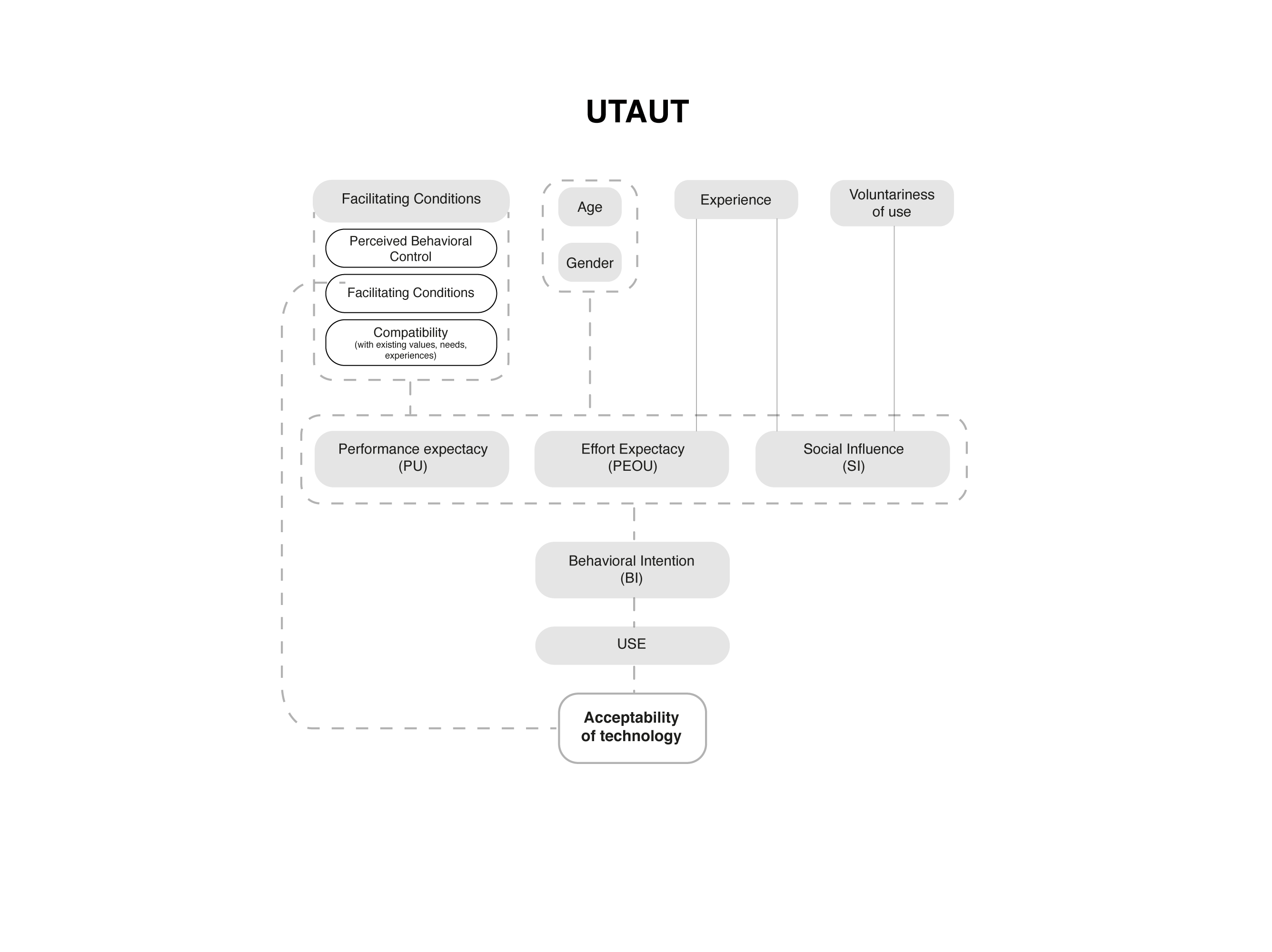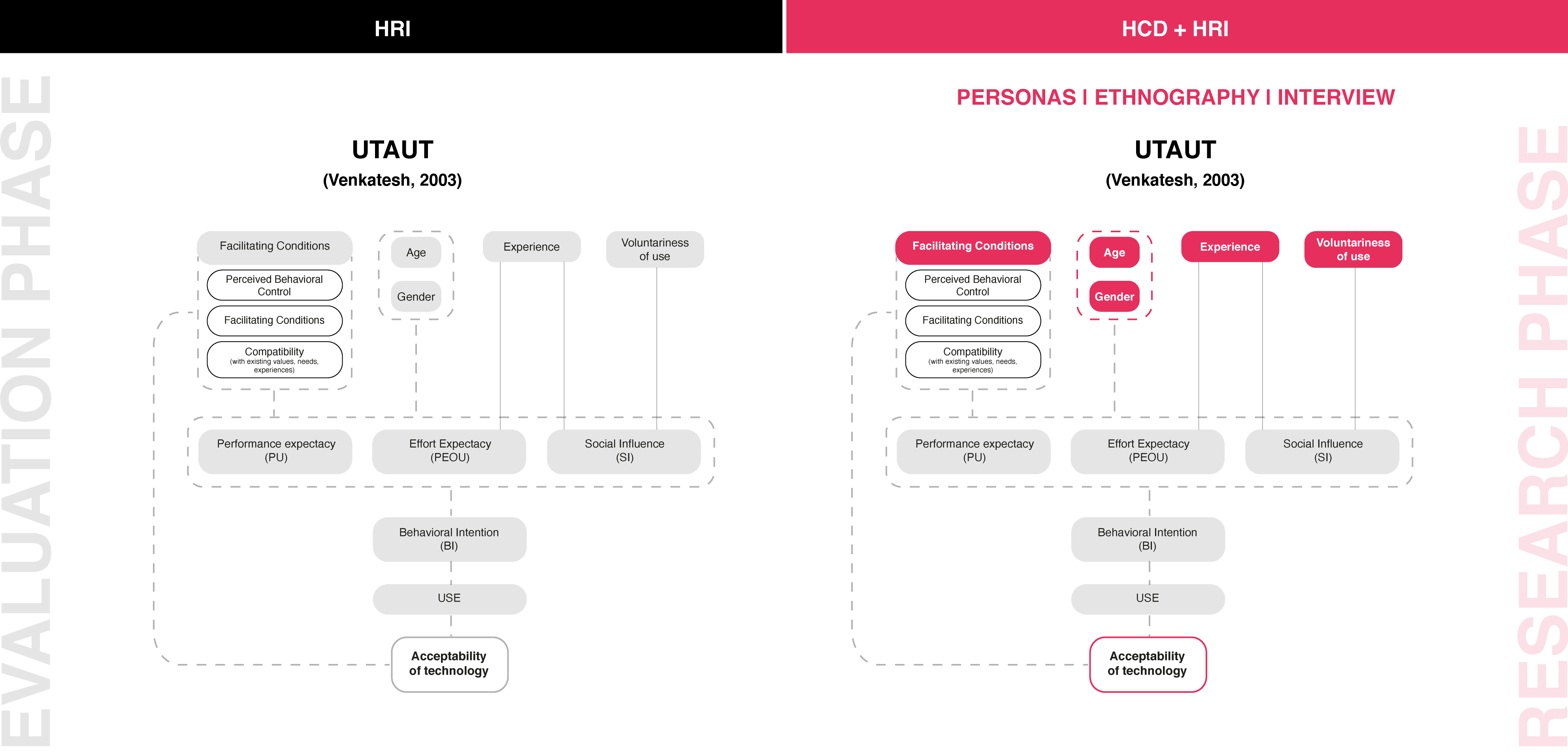UTAUT
Developed by Venkatesh et al., (2003)
Unified Theory of Acceptance and Use of Technology
The UTAUT analyzes the relationship between the attitude and intention to use (BI – Behavioral Intention) and the actual use of the system (USE), then the acceptance of the technology. The intention to use is influenced by perceived utility (PU), perceived ease (PEOU) of the system and social influence (SI). The use of the system is also determined by the facilitating conditions that can facilitate the use of the technology. In addition, there are four moderating factors that regulate the relationships between the main constructs, i.e. age, gender, user experience with the technology and voluntariness to use it.

HCD
HRI
Through the HCD’s own methods it is possible to analyze the facilitating conditions, age, gender, experience and voluntariness of the users, so as to define an appropriate design brief, increase the possibilities that robotic technology can meet the needs of the people for whom it is intended and therefore the possibilities that it is accepted. These variables mainly concern the analysis of the user, which can be carried out, although not exclusively, through three methods: Personas, interview and ethnographic survey.
Below is the architecture of the UTATU method and the relationships between its constructs that are decisive for the acceptability of the technology. In evidence are the influential variables for acceptability that can be analyzed in advance through the HCD methods identified in the upper part of the scheme (Personas, ethnography and user interview).
